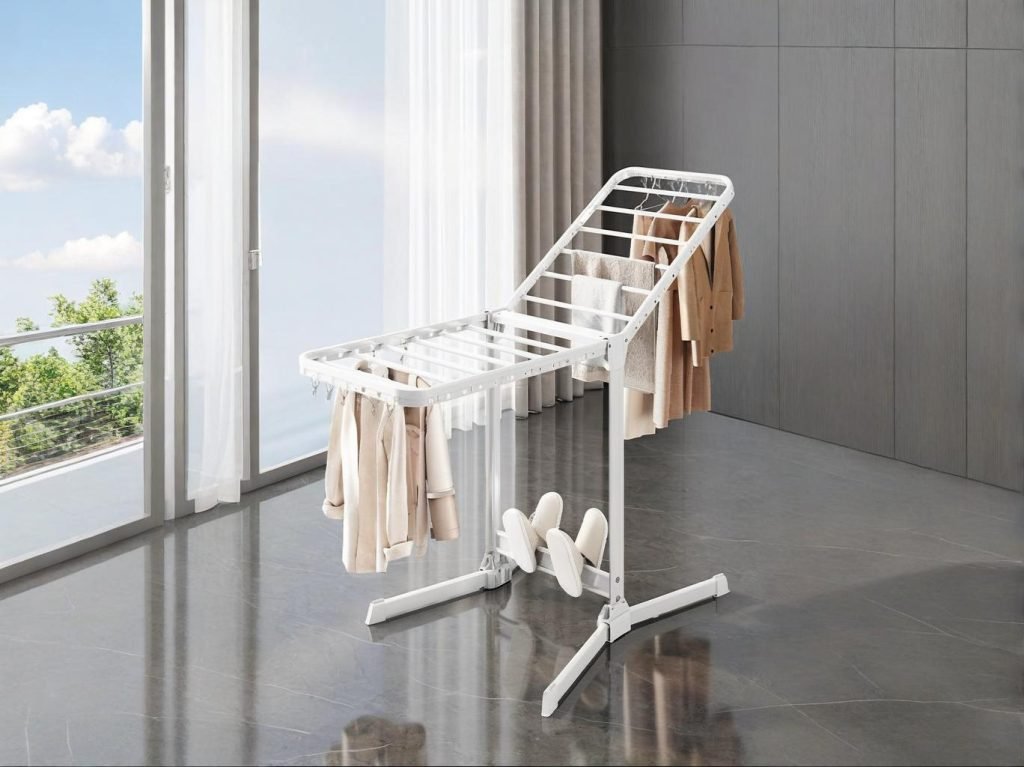A Comprehensive Study on Materials for Floor-Standing Drying Racks

Floor-standing drying racks are essential household items for efficient laundry management. The choice of material significantly impacts durability, aesthetics, and functionality. This article explores common materials used in floor-standing drying racks, their pros and cons, and provides actionable insights for selecting the best option based on user needs.
1. Stainless Steel: Durability vs. Cost
Stainless steel is a popular choice due to its strength and rust resistance. However, quality varies:
– **Advantages**: High load-bearing capacity, ideal for heavy garments. Premium 304-grade stainless steel offers superior corrosion resistance and a polished finish.
– **Drawbacks**: Lower-quality variants may rust over time, especially if the inner tube is reinforced with iron (a cost-cutting measure by manufacturers). Surface chrome plating can fade, reducing aesthetics.
– **Cost**: Generally cheaper than aluminum but pricier for high-grade options.
—
2. Aluminum Alloy: Lightweight and Corrosion-Resistant
Aluminum is favored for its balance of strength and weight:
– **Advantages**: Lightweight yet sturdy, with excellent anti-corrosion properties. Surface treatments like anodizing, powder coating, or electrophoretic finishes enhance durability and aesthetics. These processes prevent fading and simplify cleaning.
– **Drawbacks**: More expensive than standard stainless steel. Lower-cost oxidized versions may gradually lose color vibrancy.
– **Design Flexibility**: Available in multiple colors and styles, making it suitable for modern interiors.
—
3. Other Materials: Iron, Plastic, and Wood
– **Iron**: Heavy and prone to rust unless coated. Often used in budget-friendly racks but less durable.
– **Plastic**: Lightweight and affordable but lacks durability and may degrade under UV exposure. Suitable for temporary use.
– **Wood**: Offers a natural aesthetic but requires waterproofing. Susceptible to warping in humid environments.
—
4. Key Factors for Material Selection
– **Environment**: For humid areas (e.g., bathrooms), aluminum or high-grade stainless steel is optimal.
– **Load Capacity**: Stainless steel suits heavy loads, while aluminum balances strength and portability.
– **Surface Treatment**: Electrophoretic-coated aluminum resists scratches and maintains shine longer.
– **Budget**: Aluminum provides better long-term value despite higher upfront costs.
—
5. Market Trends and Innovations
The drying rack market is evolving with smart features like foldable designs and IoT integration. However, material quality remains a priority. Brands like *Hotata* and *Lianqing* dominate with aluminum and stainless steel models, emphasizing durability and sleek designs.
—
Conclusion
Choosing the right material for a floor-standing drying rack depends on balancing durability, environment, and budget. Aluminum alloy stands out for its corrosion resistance and modern appeal, while high-grade stainless steel excels in heavy-duty applications. Avoid low-quality metals and prioritize surface treatments to extend lifespan. By aligning material properties with practical needs, users can optimize both functionality and aesthetic harmony in their living spaces.